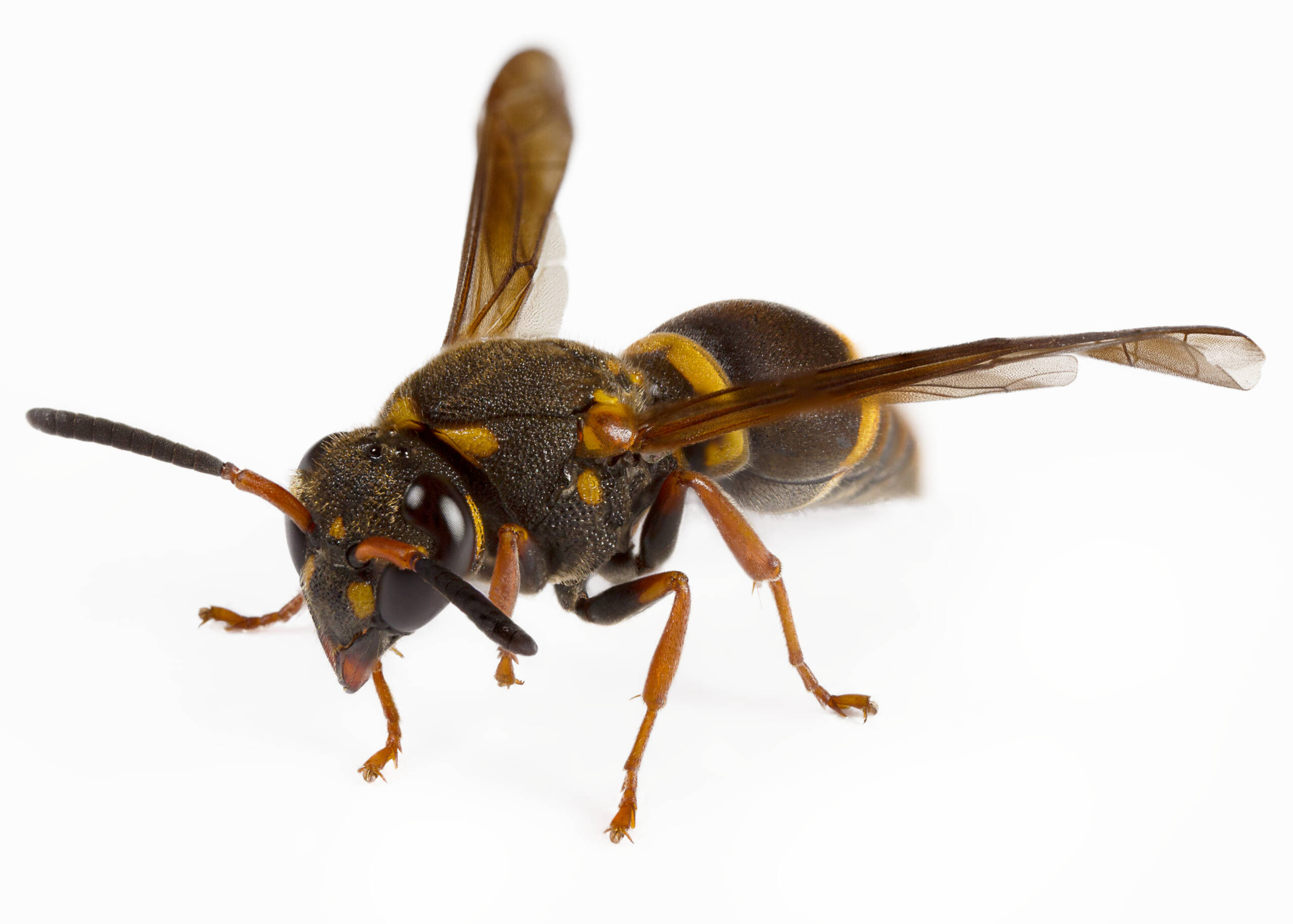1. About Wasps
Wasps are flying insects closely related to bees and ants. Unlike bees, which are primarily pollinators, wasps are predators that feed on other insects. There are many species of wasps, some of which are solitary, while others form colonies. Wasps are often yellow and black and can be more aggressive than bees. While wasps can be beneficial for controlling pests, they can also be a nuisance, especially when they build nests near homes. Wasps tend to sting when they feel threatened, and their stings can be painful or cause allergic reactions in some individuals.
2. How to Get Rid of Wasps
To remove wasps from your property, start by locating their nests. Wasps typically build their nests in sheltered areas such as eaves, attics, or tree branches. If you find a nest, it’s best to call a professional pest control service to safely remove it, especially if the nest is large or in a hard-to-reach location. If you decide to handle it yourself, wear protective clothing and use a wasp spray at night when the wasps are less active. For smaller nests, removing the nest in a sealed bag may help. Keep in mind that wasps can rebuild their nests, so you should take preventive measures to avoid re-infestation.
3. Introduction
Wasps are not just a summertime nuisance; their presence can also pose health risks due to their aggressive behavior and painful stings. Understanding wasp behavior, where they build their nests, and how to control them is essential in keeping your home and yard safe. While some wasp species are harmless and even beneficial, others can be a danger, especially for people with allergies to insect stings. Proper prevention and control strategies can help you manage wasp populations around your home.
4. Identification of Wasps
Wasps are typically recognized by their elongated bodies, narrow waists, and striking yellow and black or metallic blue and green coloration. Unlike bees, they have smooth bodies and do not have the fuzzy appearance. Wasps can vary in size depending on the species, with the most common being about 1 to 2 inches long. Social wasps, such as yellowjackets and hornets, live in colonies and have large, papery nests, while solitary wasps usually build their nests in hollow areas or underground.
5. Behavior and Habitat
Wasps are most active during the warmer months, particularly late summer and fall when their colonies are at their largest. They build their nests in sheltered locations such as tree branches, the eaves of houses, sheds, or underground. Wasps are territorial and will defend their nests aggressively if they feel threatened. Unlike bees, wasps can sting multiple times because their stinger is not barbed. They feed on nectar and fruits, and they are also known for hunting other insects, which they feed to their larvae.
6. Feeding Habits
Wasps are carnivorous and feed on other insects, including flies, caterpillars, and spiders, which they bring back to the nest to feed their larvae. Adult wasps primarily consume sugary substances like nectar, fruits, and tree sap. They are also attracted to human food and sugary drinks, which is why they are common pests at outdoor events and picnics. While they may seem like a nuisance around food, their predatory behavior helps control pest populations in the environment.
7. Prevention and Protection
To prevent wasp infestations, regularly check for nests around your home and property, particularly in sheltered areas. Seal cracks and crevices in walls, attics, and around windows to prevent wasps from building nests inside. Keep food and sugary drinks covered when outdoors, and clean up spills promptly to avoid attracting wasps. If you have fruit trees, harvest fruit as soon as it ripens, as wasps are attracted to fallen fruit. Consider hanging fake nests or using wasp-repellent products to deter them from settling near your home.
8. Methods of Control
Controlling wasps typically involves removing their nests and preventing them from returning. If the nest is small and accessible, you can remove it using protective clothing and wasp spray. For larger or hard-to-reach nests, it’s best to call in a professional pest control service. Wasp traps can also be effective in capturing adult wasps, and placing them around the property may reduce the number of wasps in the area. For long-term control, ensure that nests are removed as early as possible in the season before they grow larger and more aggressive.
9. Environmental Impact and Ecology
Wasps play an important role in the ecosystem by controlling populations of other insects, many of which are pests. They are also pollinators for certain plants and flowers, although they are less effective than bees. However, wasps can also negatively impact local biodiversity when they become invasive, outcompeting native species for resources. In some cases, the presence of aggressive wasp species can disrupt the balance of local ecosystems, especially if their populations increase rapidly.
10. Conclusion
While wasps can be beneficial in controlling pests, their aggressive nature and painful stings make them a potential threat to human health, especially for those allergic to stings. Understanding their behavior, identifying nests early, and using preventive measures can help minimize the risks associated with wasp infestations. If you encounter a wasp nest on your property, it’s best to take appropriate action to remove it safely to protect yourself and your family from harm.


